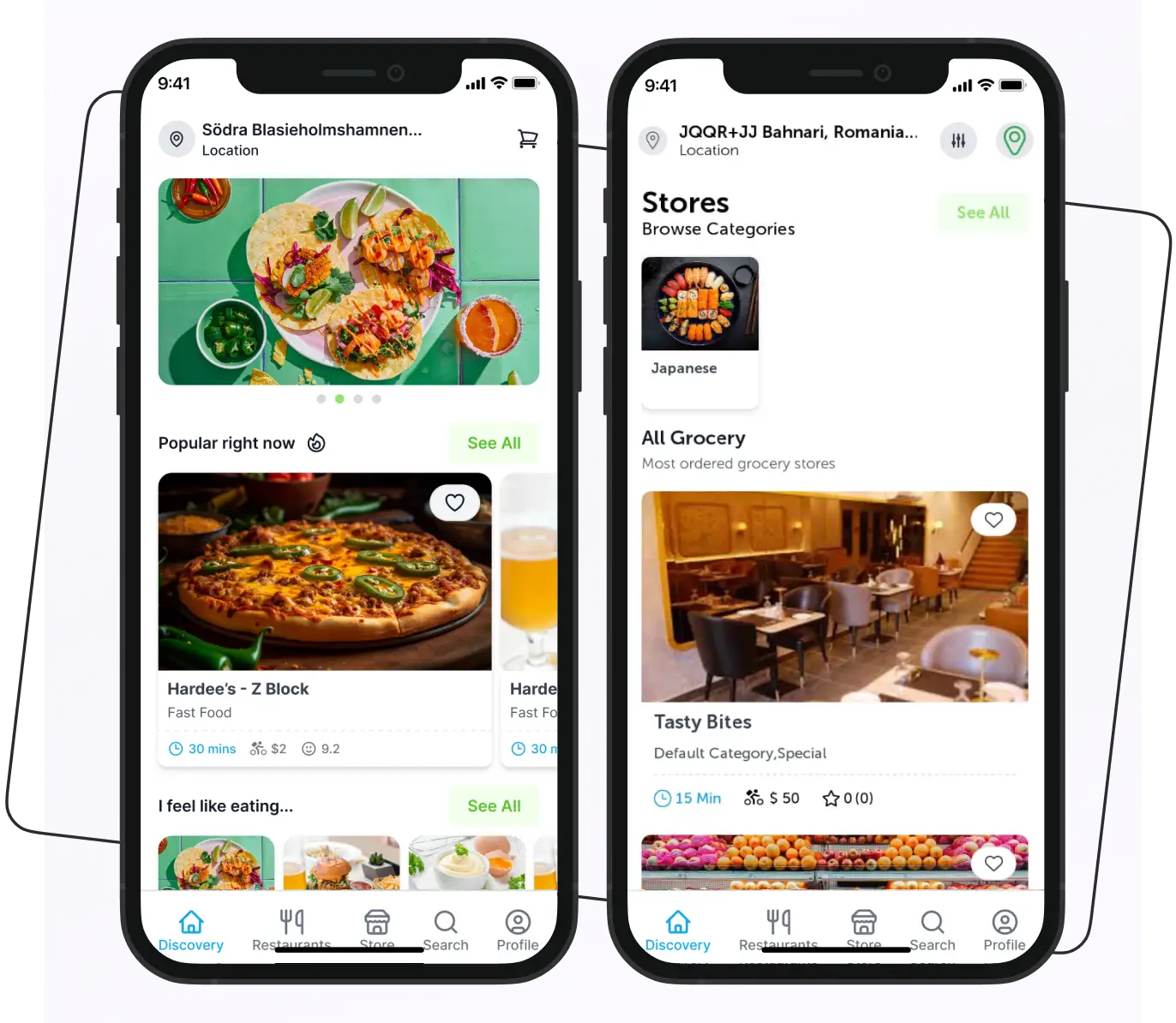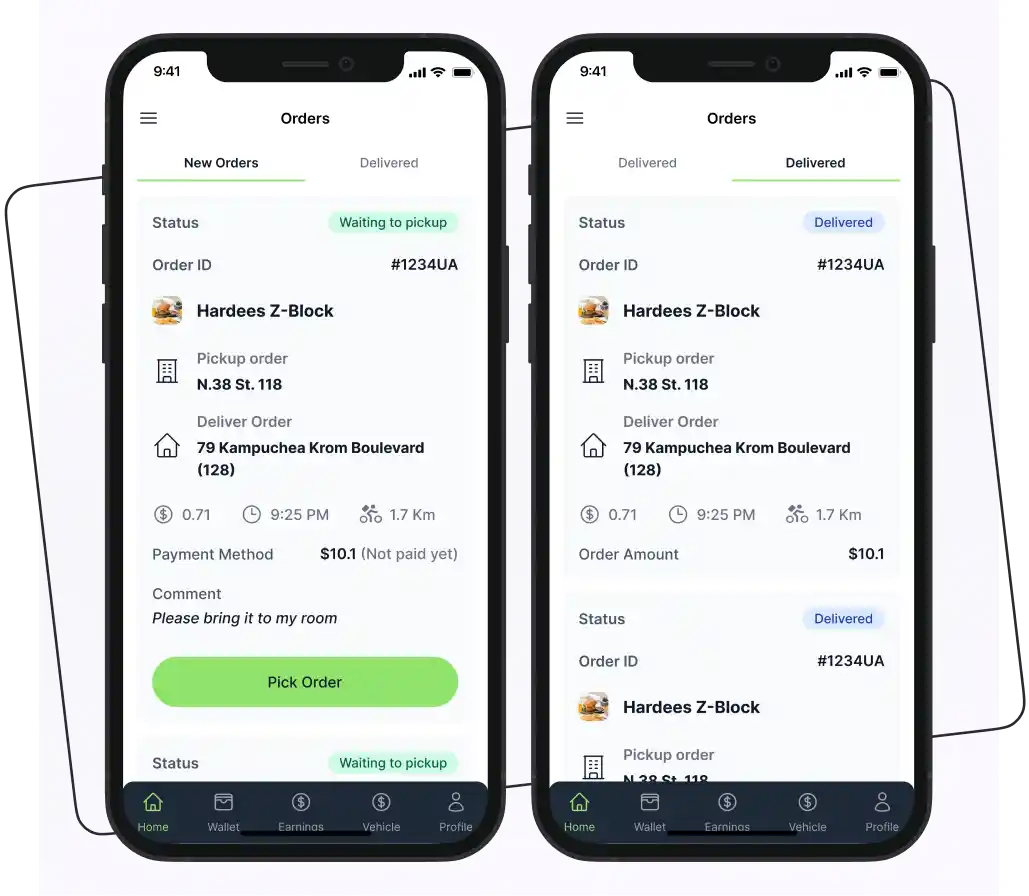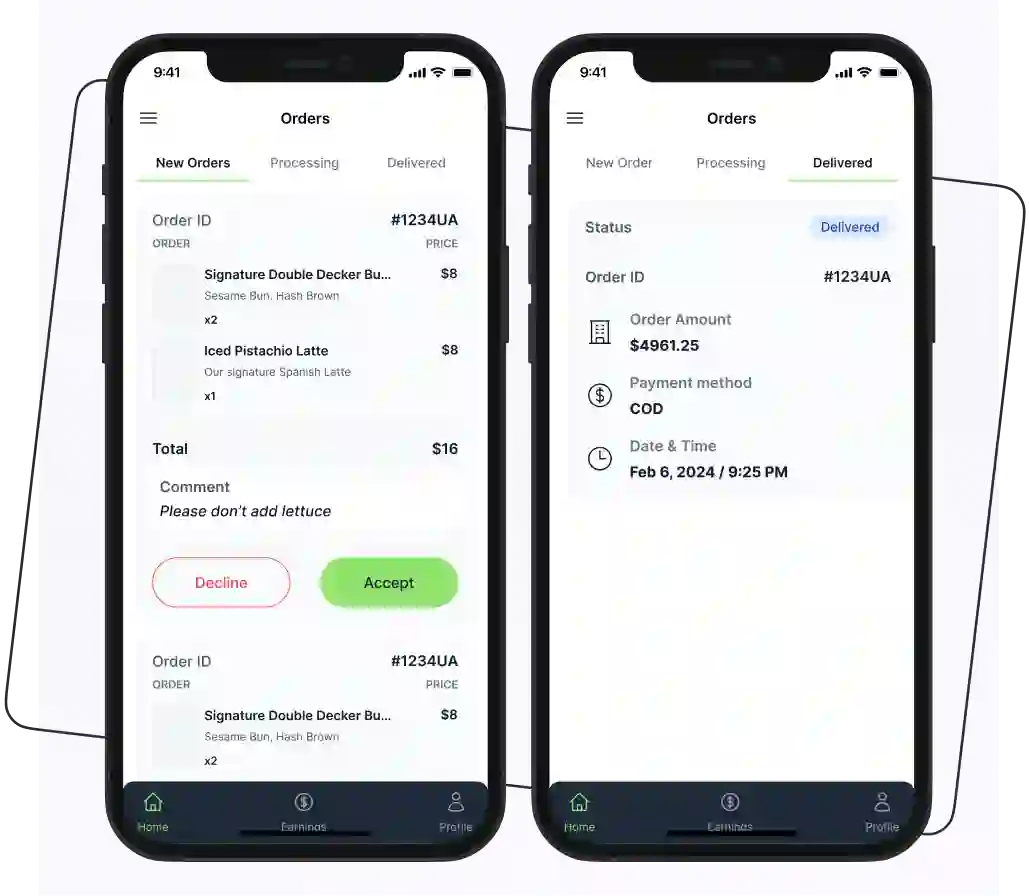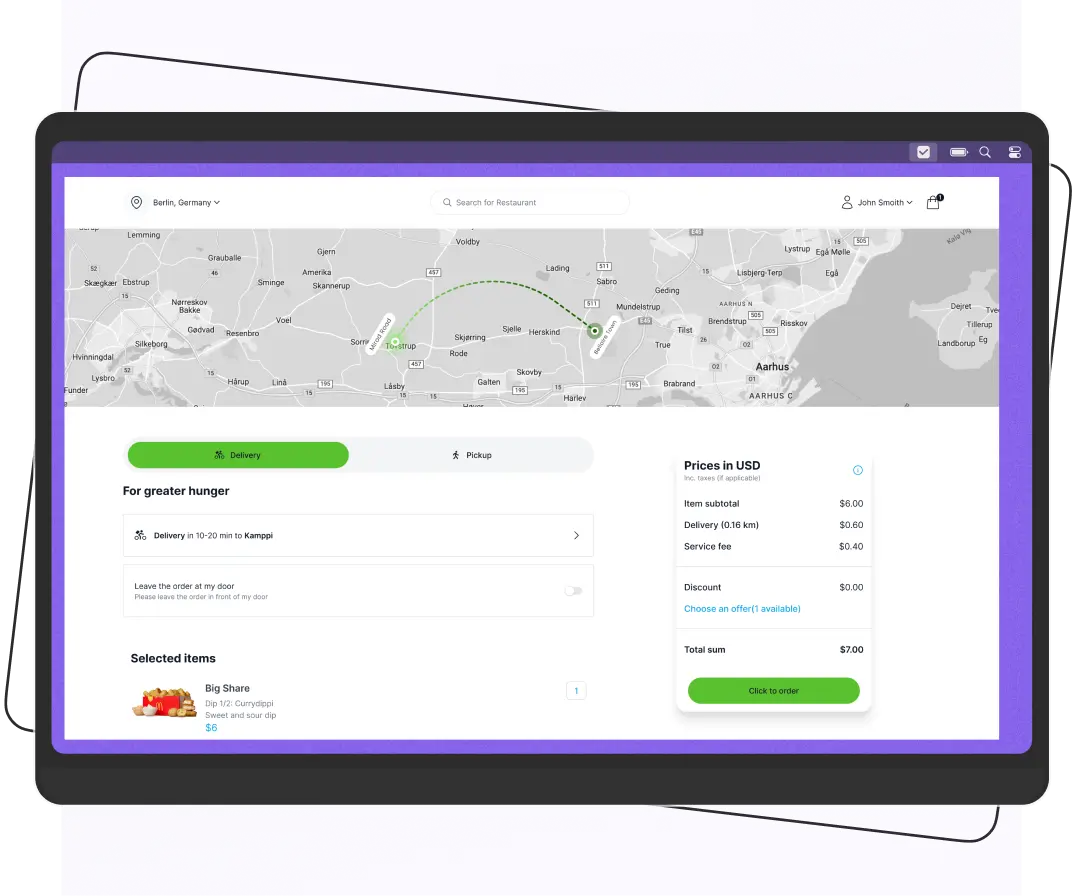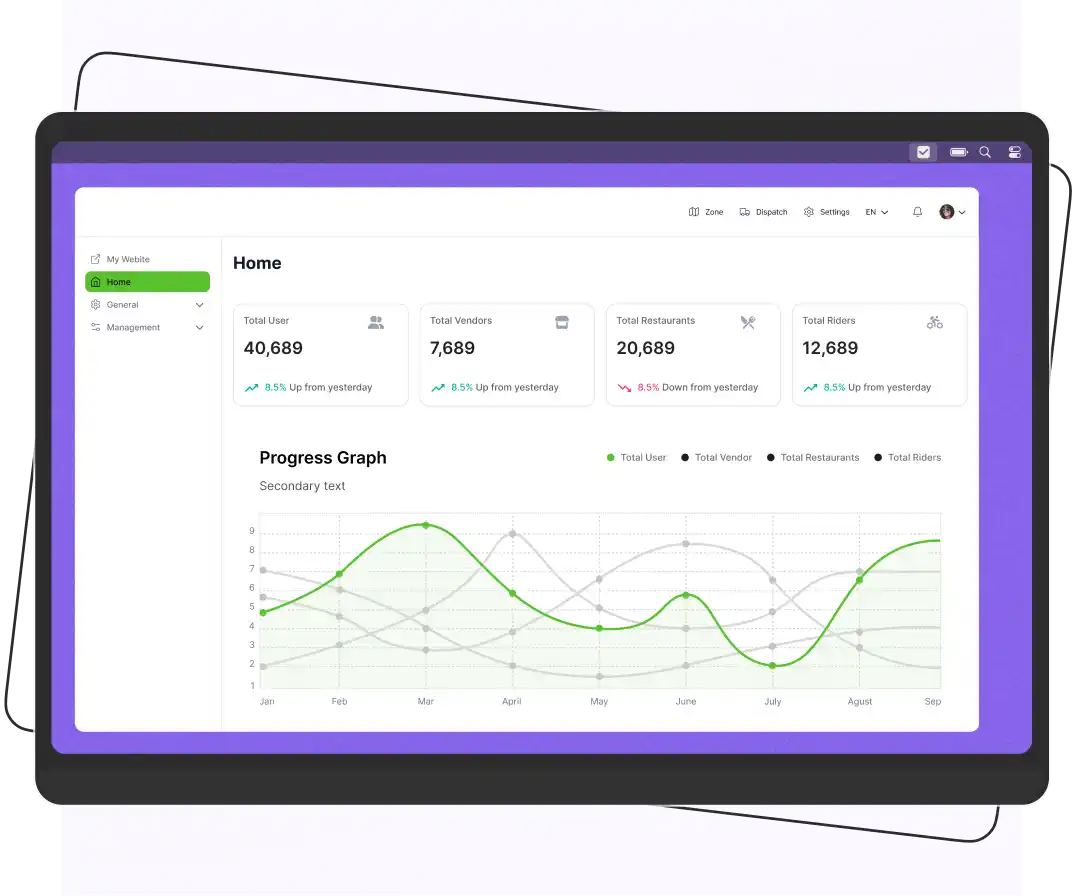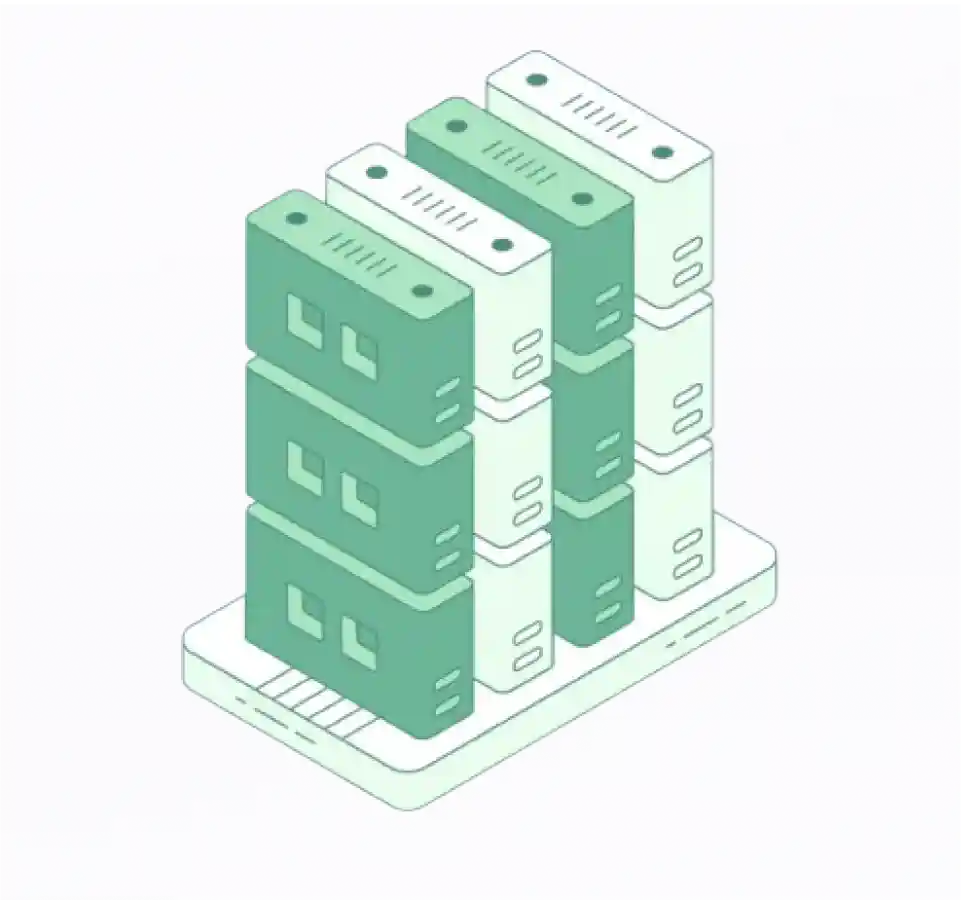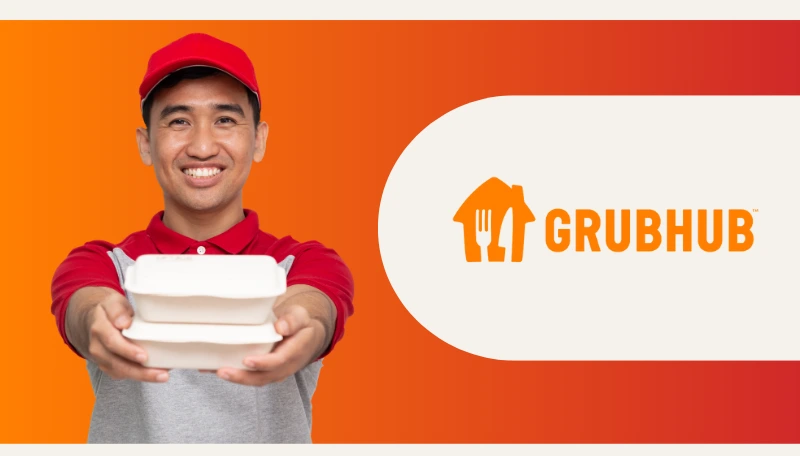
Key Takeaways
- Grubhub’s Model: Operates as an online food marketplace connecting over 375,000 restaurants with millions of users in 4,000+ U.S. cities.
- Revenue Sources: Generates income from restaurant commissions (10–30%), delivery and service fees, Grubhub+ subscriptions, and paid restaurant promotions.
- User Growth and Reach: In January 2024 alone, Grubhub recorded over 17.6 million visits in the U.S.
- Business Model: Combines logistics, tech infrastructure, customer personalization, and marketing to maintain platform efficiency.
- Competitive Comparison: Competitors like DoorDash and Uber Eats hold a larger market share, Grubhub remains a strong player with a focus on user experience and urban markets.
Thinking about launching a food delivery startup? Then Grubhub should be your blueprint. This platform transformed local dining by connecting over 375,000 merchants with millions of hungry users. Grubhub made it super easy for people to order food and groceries across the U.S. right from their phones.
But behind the scenes, it runs on a smart business model that helps both customers and restaurants win.
If you’re planning to launch your food delivery platform, there’s no better blueprint to study. In this blog, we’ll peel back the layers of Grubhub’s strategy from how it wins over users to how it generates revenue. So, you can learn what works, what scales, and what it takes to help you achieve success.
Let’s take a closer look at what makes Grubhub a go-to choice and how you can follow in its footsteps.
What is Grubhub?
| Quick Look Into Grubhub | |
| Grubhub Founders | Matt Maloney |
| Founded | 2004 |
| Headquarters | Chicago, Illinois |
| Restaurant Partner | Over 375,000 restaurant partners in more than 4,000 cities in the USA |
Grubhub is your go-to on-demand food delivery service, bringing delicious meals right to your doorstep. With a user-friendly platform, it simplifies the process of ordering food online from a variety of local restaurants, making mealtime more convenient than ever.
In January 2024, Grubhub saw an impressive 17.6 million visits to its website in the United States alone, according to Statista.
But Grubhub is more than just a delivery service; it’s a great way to get your favorite food items from anywhere in the city without leaving your home. Whether you’re craving pizza, sushi, or a hearty burger, Grubhub connects you to the flavors you love with just a few clicks.
Interesting Facts About Grubhub
Here are some interesting statistics about Grubhub that highlight its impact and popularity in the food delivery industry.
- Users: GrubHub had over 22 million users in 2022 who rely on the platform for food delivery, showcasing its widespread acceptance and usage among diners.
- Order Volume: The platform processes approximately 500,000 orders per day, indicating a huge demand for its services.
- Food Trends: During the pandemic, certain food items saw a dramatic increase in popularity. For example, the spicy chicken sandwich became 353% more popular, and orders for cold brew coffee rose by 232%.
- Plant-Based Orders: There has been a notable increase in plant-based food orders, with vegan orders rising by 23% and plant-based burgers specifically increasing by 90%.
- Top Foods: Some of the top trending foods in 2020 included the spicy chicken sandwich, which saw a 299% rise in popularity, and the plant-based burger, which increased by 291%.
- Meal Times: Different meal times have distinct trends. For breakfast, the acai bowl was 359% more popular, while for lunch, the Thai chicken salad saw a 399% increase in orders.
Supercharge your deliveries with Enatega.
Launch NowWhat is the Grubhub Business Model?
Grubhub’s business model is simple and easy to understand. It’s an online food marketplace that connects customers with restaurants and provides delivery services.
Let’s discuss the main components of the Grubhub business model.
Platform as a Marketplace
- Customer Engagement: Grubhub operates as an online platform where customers can browse menus from various restaurants in their area.
- Restaurant Partnerships: The platform partners with a wide range of restaurants, from local eateries to national chains, providing them exposure to a larger customer base.
Grubhub Revenue Model
How does Grubhub make money?
- Commission Fees: Grubhub charges restaurants a commission on each order placed through its platform. This fee ranges from 10% to 30% of the order total.
- Delivery Fees: Customers are often charged a delivery fee, which varies based on the distance to the restaurant and other factors. This fee is an additional revenue source.
- Subscription Services: Grubhub offers a subscription service called Grubhub+, which provides customers with benefits like free delivery on eligible orders for a monthly fee.
- Advertising: Restaurants can pay for increased visibility on the Grubhub platform through promotional placements, enabling them to attract more customers.
- Partnerships: Grubhub partners with various restaurants, grocery stores, and other food providers, expanding its service offerings and customer base.

Logistics and Delivery
- In-house Delivery: Grubhub uses its delivery drivers (Grubhub Delivery) to handle orders, ensuring quality and efficiency.
- Partnerships with Drivers: The platform also allows restaurants to manage their deliveries or use third-party delivery services.
Technology and User Experience
- Mobile and Web Applications: Grubhub provides a user-friendly app and website for easy ordering, tracking, and payment.
- Personalization and Recommendations: The platform uses algorithms to recommend restaurants and dishes based on user preferences and past orders.
Marketing and Customer Acquisition
- Promotions and Discounts: Grubhub often runs promotions to attract new customers and retain existing ones.
- Social Media and Advertising: The company uses various digital marketing strategies to increase brand visibility and user engagement.
Grubhub Business Model Canvas
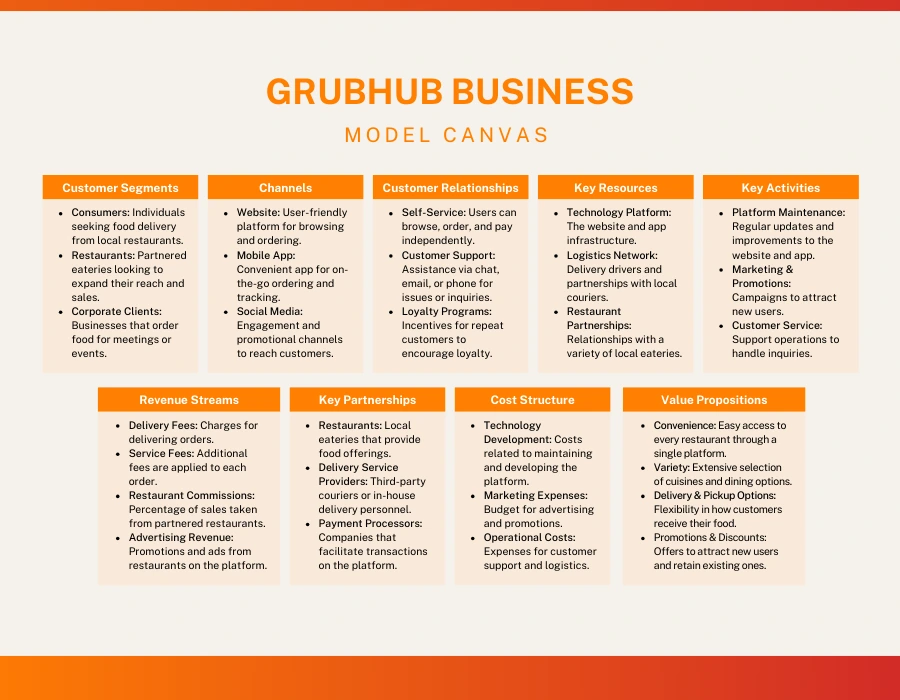
Doordash vs Grubhub Business Model
The table below shows the comparison between DoorDash and Grubhub’s business model.
| Feature | DoorDash | Grubhub |
| Founded | 2013 | 2004 |
| Business Model Type | On-demand food delivery, focusing on logistics and efficient delivery service. | Online food ordering and delivery, aimed at connecting customers with local restaurants. |
| Revenue Streams | Delivery Fees: Charged to consumers for each order. Service Fees: Additional fees for using the platform. Subscriptions: DashPass offers a monthly subscription for free delivery on eligible orders. Partnerships: Collaborations with restaurants for exclusive deals. | Delivery Fees: Charged to consumers for each order. Service Fees: Additional fees for using the platform. Advertising: Restaurants can pay for enhanced visibility on the platform. Grubhub+: Subscription model offering perks for a monthly fee. |
| Delivery Model | Uses a network of independent contractors (Dashers) to deliver food, focusing on logistics and real-time tracking to ensure timely deliveries. | Also uses independent contractors (Grubhub drivers) for food delivery, with a strong emphasis on user experience and customer service. |
| Subscription Service | DashPass: For a monthly fee, subscribers receive free delivery on orders from eligible restaurants, increasing customer loyalty and retention. | Grubhub+: A subscription service that offers free delivery and other perks for a monthly fee, aimed at increasing customer loyalty and order frequency. |
| Geographical Focus | Primarily serves the U.S. market but is expanding internationally (e.g., Canada, Australia). | Mainly operates in the U.S., with a focus on major cities. However, it has also made efforts to expand its reach. |
| Market Share | Currently holds the largest market share in the U.S. food delivery sector. | Holds a significant share of the market, but it is smaller than DoorDash, partly due to increased competition. |
Grubhub vs Uber Eats Business Model
Check the table below and understand the difference between a Grubhub and Uber Eats business model.
| Feature | Grubhub | Uber Eats |
| Ownership | Owned by Just Eat Takeaway, a major player in the food delivery industry. | A subsidiary of Uber Technologies, using its existing infrastructure. |
| Market Presence | Primarily operates in the United States, with a strong foothold in urban areas. | Has a global presence, operating in numerous countries and cities worldwide. |
| Business Model | Operates on a commission-based model where they charge restaurants a percentage of each order. | Also follows a commission-based model, but additionally incorporates delivery fees charged to consumers. |
| Revenue Sources | Delivery fees from customers. Commissions from partner restaurants, usually range from 15% to 30%. Advertising and promotional fees for restaurants featured on their platform. | Delivery fees are charged to consumers. Commissions from restaurants, similar to Grubhub. Additional revenue from subscription services like Uber Eats Pass, which offers benefits for a monthly fee. |
| Promotional Strategies | Uses discounts, loyalty programs, and promotional offers to attract and retain customers. | Runs promotions through the Uber app, using its existing user base, and often offers discounts for first-time users. |
| Partnerships | Collaborates closely with local restaurants, including independent and small chains, to expand its offerings. | Has partnerships with a variety of restaurant chains and local eateries, benefiting from Uber’s established relationships. |
What Makes Grubhub Unique?
In the online food delivery market, GrubHub has taken a giant lead, as it is an instant solution for the larger masses of restaurant servers.
Grubhub distinguishes itself from other delivery platforms in several notable ways, such as:
Integration with Other Platforms: Grubhub offers easy integration with various platforms, enhancing user experience and accessibility.
Strong Brand Recognition: With strong brand recognition, Grubhub has established partnerships with several well-known brands and maintains a strong presence in the market.
Broad Restaurant Selection: The platform has a diverse selection of restaurants, ensuring that customers have access to top-notch services and cuisines.
Extensive User Base: One of Grubhub’s standout features is its extensive user base, with over 20 million users using the platform for their food delivery needs.
Challenges Faced by Grubhub
Grubhub, like many companies in the food delivery industry, faces several challenges. Here are some key issues.
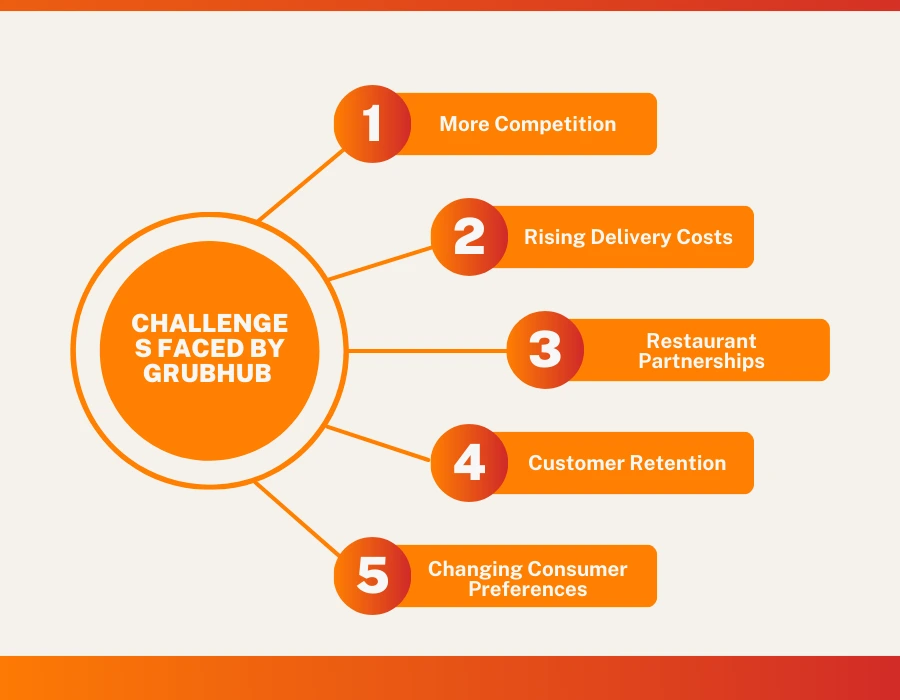
- More Competition
Grubhub competes with various other delivery platforms like DoorDash, Uber Eats, and Postmates, making market share a huge challenge.
- Rising Delivery Costs
Increasing fuel prices and labor costs can cut into profit margins, prompting the need for strategic pricing adjustments.
- Restaurant Partnerships
Maintaining and expanding partnerships with restaurants can be difficult, especially when competitors offer better commission rates or incentives.
- Customer Retention
Keeping customers engaged and loyal can be challenging, as they have many alternatives. Promotions and loyalty programs are essential but can be costly.
- Changing Consumer Preferences
As consumer habits change, Grubhub must adapt to trends such as healthier eating, diet-specific options, and preferences for local businesses.
FAQs
1. Why is Grubhub so successful?
Grubhub is successful due to several factors, such as:
- Wide restaurant selection
- User-friendly platform
- Strong brand recognition
- Promotions and discounts
- Delivery network
2. How does Grubhub work and how much does it cost?
Grubhub operates as an online food ordering and delivery platform, connecting customers with local restaurants.
Here is the working of Grubhub.
- Ordering: Customers browse the app or website for nearby restaurants, select items, and place their orders.
- Payment: Payments are processed through the platform, often including delivery fees and tips.
- Delivery: Grubhub either uses riders or partners with restaurants to deliver the food, depending on the location.
Costs
- Delivery Fee: Ranges from $1.99 to $8.99, depending on the restaurant and distance.
- Service Fee: Usually around 5-15% of the order total.
- Small Order Fee: Applied if the order is below a certain amount.
3. Who is Grubhub’s competitor?
Grubhub’s primary competitors are:
- DoorDash
- Uber Eats
- Postmates
- Deliveroo
- Just Eat Takeaway
Supercharge your deliveries with Enatega.
Launch NowConclusion
Grubhub has marked solid footsteps in the food industry, and it is surprising many businesses with its success. The business model of Grubhub is uniquely structured and helps restaurants to reach the most relevant audience.
So, if you want to be successful in your business and develop a similar food delivery app like Grubhub, you can consult Enatega. We are a leading food delivery app development company to helps startups and big giants build an app of their dreams.
So, without wasting any time, book a free demo with us, discuss your requirements, and get a customizable solution.












 IOS
IOS Android
Android Web
Web